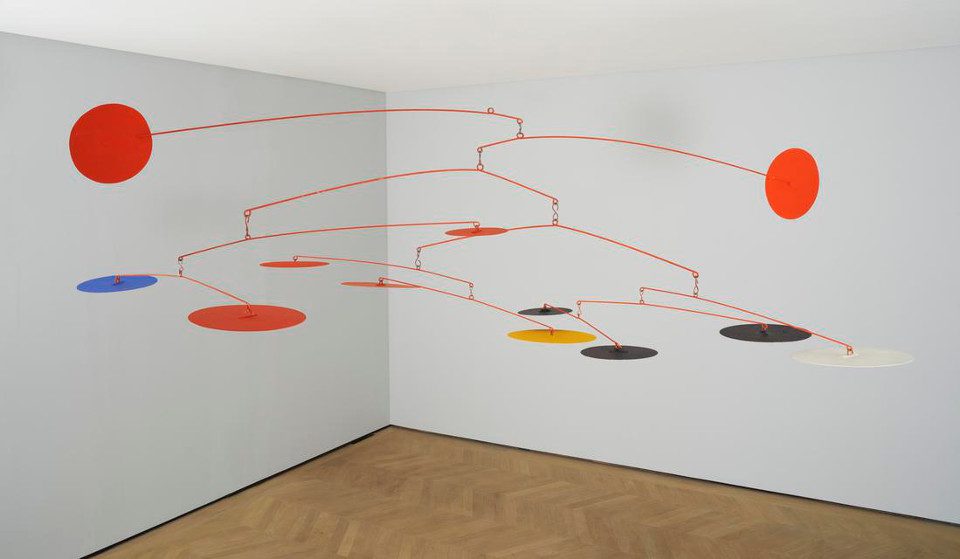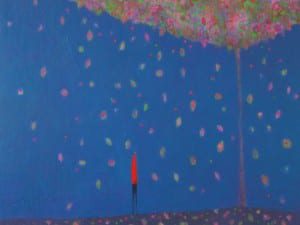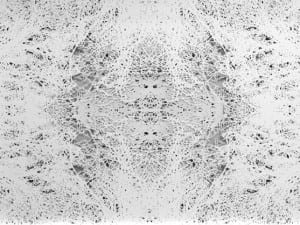Known for his pioneering use of the mobile, where suspended sculptural elements in a three-dimensional space create an ever- shifting harmony, Alexander Calder (1898–1976) was an artist whose practice was truly trans-Atlantic. The American sculptor was strongly influenced early in his career by the French avant garde and the time he spent in Paris with the likes of Piet Mondrian, while his admirers included Marcel Duchamp and Jean-Paul Sartre. Many of his works were named in French and first exhibited there.
It was this dialogue between the American and European art scenes that led him to develop his trademark three-dimensional abstract sculptures which maintain a kinetic element. The earliest of these moved by a system of motors, although Calder soon abandoned these mechanics by instead suspending cut metal shapes on lengths of wire, which float through the air at the lightest touch of a breeze. Duchamp coined the term “mobile” for them, which in French means both “motion” and “motive”. Calder was later to develop a static counterpart, which Jean Arp dubbed the “stabile”.
Fittingly then, Dominique Lévy London enters into its own dialogue across the Atlantic, responding to its ongoing exhibition of Calder’s work in New York, Multum In Parvo. While that presentation of his back catalogue focuses on a selection of more than 40 small scale works, the London show demonstrates the monumental ambition of the mobile creations. Primary Motions is a presentation of the larger-than-life Blue and Yellow Among Reds (1964).
Encompassing the entire gallery floor at 22 Old Bond Street it hovers above the viewer, consuming the space with its spirited performance of vibrant red, blue, yellow, black, and white. The circular elements slowly dance from the ceiling, the connecting wires twisting under and over each other while retaining a soft sense of balance. By working with primary colours as well as the non-colours of black and white in a not-quite-symmetrical balance, Calder creates points of reference to reveal the movement of the mobile and emphasise the formal elements of physicality and aesthetics in the structure.
Though grand in scale, it retains a sense of refinement with its delicate wires and gentle movement, with the elements almost appearing to float in mid-air. As Calder said: “People think monuments should come out of the ground, and never out of the ceiling, but mobiles can be monumental too.”
Alexander Calder, Primary Motions, until 1 September, Dominique Lévy, 22 Old Bond Street, London.
See more: www.dominique-levy.com.
Follow us on Twitter @AestheticaMag for the latest news in contemporary art and culture.
Credits
1. Alexander Calder, Blue and Yellow Among Reds, 1964. Painted sheet metal and wire. 78 3/4 x 157 1/2 inches (200 x 400 cm). © 2015 Calder Foundation, New York / DACS London. Photo by Leon Chew.




